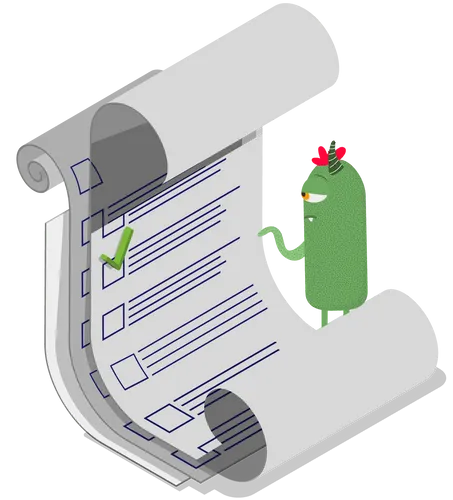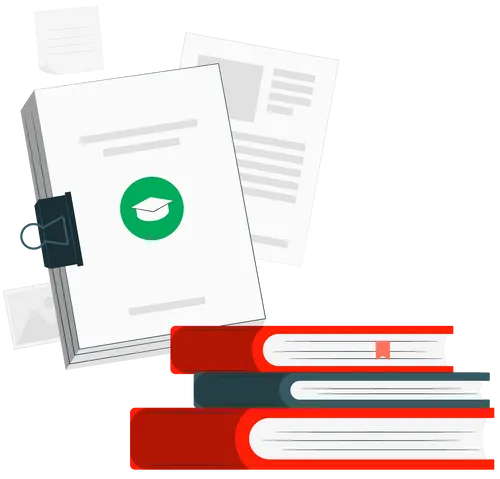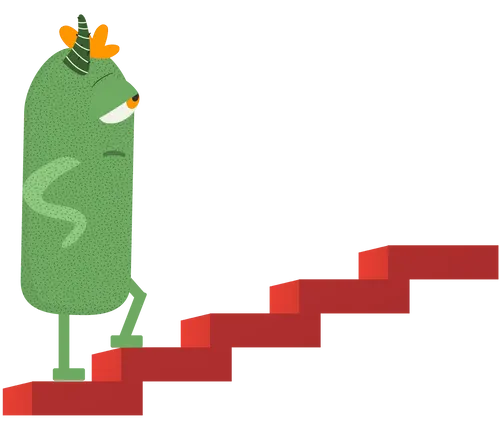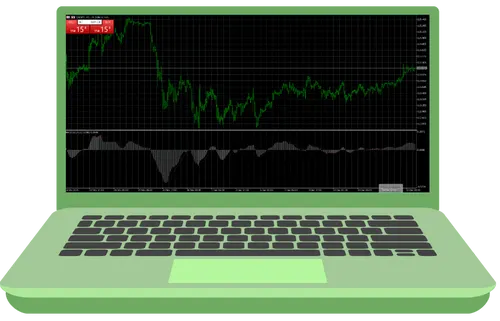Our partner, XM, lets you access a free demo account to apply your knowledge.
No hidden costs, no tricks.

Trading forex without a strategy is like jumping in a deep pool without knowing how to swim. Even if you knew how to swim, it still wouldn’t bring the desired results if you don’t do it correctly, same with Forex. If you don’t know how to use a strategy correctly, even if you have one, it’s unlikely that you will go far.

Those who figured out how to become profitable in the Forex market have realized huge gains, and some of them became millionaires, while others just made a few thousand. All this was done by having the right mindset and following a proper trading strategy.
Believe it or not, almost everyone who trades in the currency market started from the same point, and in this guide, we are going to provide you with a full guide on how to start trading and how to become profitable doing it.
Do your research before starting any trading activity to enrich your knowledge and make sure you are confident that you know what you are doing.

Education is the most important factor in dealing with any financial market because if you want to know how to trade Forex profitably, you need to know what you are dealing with, and where you are putting your money. This is why you should start by answering these simple questions:
These are the basics that you need to know. They will help you take your first steps into the Forex market. Remember, the more you practice and learn, the more confident of a trader you will become.

Be realistic. You should not expect to make $10k of profits on a monthly basis or to be constantly winning from the first time you trade. The market is very dynamic, and it contains many types of risks.
So, if you want to know how to become a profitable Forex trader, start by having reasonable expectations. Whether you are looking for the main source of income or a side hustle, you have to always set clear achievable goals.
Let’s say you started your first trade with $1,000. Knowing that successful FX traders make an average return of between 1% and 5%, you can conclude that as a beginner, you will probably be lucky if you reach a 1% monthly return. This means that you will gain $10 from the $1,000 that you invested if all goes well.
By the time you become more skilled at it, maybe you can increase your invested capital to say $10,000. Let's also assume that you have spent some time learning about the markets and honing your skills. At this point, you might be able to increase your expected returns to 3%. That means that on the $10,000 that you are trading with you might see a monthly income of $300. Great! This might not seem like much, but as you improve all these numbers will keep improving and soon you can be a profitable trader.
There are a few trading strategies that are used by newbies and experienced traders alike. No matter the skill level, all successful traders follow a set strategy.
A scalping strategy is one way how you can earn profits in Forex trading. It is often used by beginner traders, and it relies on accumulating many small gains.

Another common strategy is called “day trading”. As the name suggests, traders open positions at the start of the trading day and close them before the end of the day, thereby realizing whatever losses or gains their positions have incurred.
Other traders keep their trading positions open for a few days or weeks, which is known as swing trading. This is more of a long-term focused strategy, but just as viable as any other.
By continually learning more about FX trading, you can eventually develop your own trading strategy, one that works best for you. Regardless of the strategy you choose, you need to test it first, see if it is effective and how you can implement it in real-life trading. Then, once it has proven to be useful, take to the markets and try to make some profit.
Almost all trading platforms offer a demo trading account that is perfect for testing out strategies and ideas. With a demo account, you can test out any trades in a simulation of real-life conditions without having to worry about losing any money as you will be given some virtual money to practice with.
The more you practice, the more proficient you will become at making a profit with Forex trading. Much like with anything else, practice makes perfect, but expect to see pretty large bumps on your way to success.

No matter how much you read and learn, you need to get hands-on trading experience. By doing things practically using a demo account, you will not only get a real feel for the market, but it will teach you the value of all the interesting trading tools on offer.
We cannot recall any successful trader who directly made it from the first hit, or just by theory, all the best Forex traders had several attempts before landing their first successful trade.
Like the famous golfer, Jerry Barber once said, “The more I practice, the luckier I get.”
Regardless of how urgently you need to make money, you need to take some tentative steps. At first, things might look shaky, but soon you will find your footing. So before throwing all your money in and hoping for the best, keep these things in mind:

That’s how you can make it in Forex trading. Embrace every step you take, observe the outcomes of every decision you make, and treat every step as an independent journey.
Something that every trader knows and does prior to making any decision, is observing the market on a daily basis. You need to do this in order to understand what is happening in the markets and what decisions you need to make to be profitable.
Since this is not a random gambling game, and you want to know how to be a profitable Forex trader, you need to make trading decisions that are backed by logic and facts, using the following analytical techniques.
“Never, ever argue with your trading system” - Michael Covel

This is the process of linking news about events or certain political or economic decisions to a specific market movement.
It is very important to have some basic observational and reasoning skills to do this properly. You don't need to be Sherlock Holmes to figure out the correlations between what is happening in the news and in the markets. Simple things can tell you a lot. Like, let's say higher inflation rates were just announced in a country, this will have an effect on the value of that country's currency. See, simple.
These announcements and other forms of news will give you a good idea of whether it is worth opening a long or a short position on a certain currency pair, or if it is better to just refrain from placing any market orders for a while.
Therefore, you need to read as much financial news, watch press conferences, and keep an eye on the fiscal/monetary policies of large economies such as the US and the EU, so you can be sure to always stay in the loop.
On the other hand, technical analysis uses the numerical data of price charts, and historical price fluctuations to predict potential price movements.
Since the historical price data can unveil some information about the difference between the demand and the supply of a certain asset, and how the markets generally react to such circumstances, this can help traders make reasonable decisions.

Indicators are signals that indicate the expected price shifts for the coming period of time. So when a certain indicator tells you that it is a good time to buy, it might be time to head for a long position. Or if the indicator shows signs of a bear market, then a sell order might be in order.
Ideally, you want to keep an eye on both technical data and fundamentals. This way you will have a clearer picture of what is actually happening and how it might affect prices.
This is when you are basing your trading decision according to the general trend. How do other traders view the market? If they are all bullish then it might push prices up. The market sentiment is all about how traders feel about the market at that point in time.
To help you with figuring this out, there is a tool called Twitter sentiment analysis, which skims through all the statements and posts on Twitter, using certain keywords. This amazing tool will then paint the picture of what people are saying about a certain currency pair.
The system will then return its verdict in the form of a positive or negative number based on how positive or negative market sentiment is about that currency pair.
After learning how to trade and using strategies to land successful trades, there are some tools and options available that can be used to help you make better profits.
The tools can help you profit even more from Forex trading, by entering a high-value trade position with just a small investment or gaining some control over the risk associated with every trade. Let's look at a few of these now:

Leverage works as a ratio that amplifies your trading capital. It is an amount of money that the broker lends you in order to be able to enter a high-value trade position even though you might not have the capital for it.
Entering a high-value position can entitle you to higher gains since you are trading with bigger capital. However, it will also amplify any losses that you might incur, so it should be used with much caution.
For example, if you are trading with $100, and the broker is offering leverage of 1:100, you are able to enter trades that are worth $10,000 (100 * $100).
If you gain, let’s say 2% off of this trade, then your profit will be $200, twice your initial capital. But if your trade loses just 1%, then you lose all of your initial capital and you'll have to start back at square one.
Do you want to know a secret about how you can limit your risks when trading Forex? Limit orders. One of these so-called limit orders is called a stop-loss order. It means setting a cap for the amount you are willing to lose as a result of market price changes.
Traders set the stop-loss order at any point below the entry price so that when the market price fluctuates and reaches the selected stop-loss, the order will automatically close the position.
This way you can sleep easy, knowing that if things go south, you’re protected.
Some traders do trade without the stop-loss, but we do not advise you to do so.
On the other side of the limit order fence, you will find the take-profit order. The take-profit order can be set to limit the amount of profit you can take. That sounds counterproductive, right? Well, let's say you want to open a position in the market, but have to run to a meeting or a cheese-eating contest or whatever it is you might be busy with. If you have a take profit-order in place and the market moves to a point where you are making some money, the take-profit order will close out your position at the level you set it to and so lock in your profits.
Of course, a major drawback of the take-profit is that it limits the potential gains if the price keeps going in your favor, but it is better to close a position with a smaller profit than run the risk of having the market turn around while you're not there and ending up with a loss.
There are some tips and things to consider that will not only let you know how to always win at Forex trading but also enable you to limit your exposure to the risks that traders face.
These tips are typical to all successful FX traders since these are based on the advice of wealthy traders in this field.
“Most traders take a good system and destroy it by trying to make it into a perfect system.” - Robert Prechter
The risk/reward ratio is like a pattern in which you decide how much money you are willing to lose and how much you plan to gain from every investment you make.
Let’s say you are comfortable with a 1:2 risk-to-reward ratio. If you are trading in a specific currency pair, and you are aiming to earn 100 pips, this means that you are willing to take a loss of up to 50 pips.
This helps you to determine where you will end up placing your stop-loss and take-profit orders.
In an attempt to minimize your risk, don't bet it all on one number. What I mean is, you shouldn't spend a large sum of money on any one position.
It is generally recommended to use no more than 5% of your total capital when opening a trading position.
Keep in mind that you can have more than one position open at the same time, which, if placed properly, can minimize your risks. We all know how the old adage goes, “don't place all your eggs in one basket”.
The top traders who know how to always win in Forex trading diversify their trading portfolio, by holding several trading positions, since there is a chance that if one trade loses, the other trade might win depending on the dynamics of the market.
So, even when holding multiple trading positions, it is recommended to just use 5% of the capital that you have in your account for each open position. Don't just open 5 or 8 of the same trades. Be smart. Learn a bit about hedging in Forex, this will give you a clear idea of how to spread your risks and not lose everything at once.
Leverage is a double-edged sword. Despite the fact that it can assist you in making larger profits with smaller amounts, it can just as easily help you from the edge into the pit. As leverage can place you in high-value trade positions with borrowed money from the broker, you can easily make huge gains or losses, and fast.
If you are using leverage and things go well, you can see a $100 investment turn into a $500 profit in no time. The same rings true for losses though, and if things go really wrong you could even end up losing more money than you have in your trading account and become indebted to the broker. Not good.
For that reason, it is recommended that beginners start with leverage of 1:10, as it assists them to go for higher-value trades, while at the same time it doesn't put them in a too-risky position.
When using leverage in your trades make sure to have a stop-loss in place just in case.
One of the major mistakes that traders will make is trying to compensate for the loss of one trade, by coming back to open a new trading position, hoping to make up for the money that they are now missing.
Such actions are usually backed by emotions and have no logic or analysis to back them up. Whenever you feel anger or frustration from losing money in the market, the best thing to do is to step back and take a break. Tomorrow is another day. So, relax for a bit, then look at what went wrong. Analyze, plan and then get back on the horse and trade once more. By doing this you will be trading more like a robot than a human, which is the perfect way to trade.
Always remember that in FX trading you have to plan every trade you make and never use emotion to make trading decisions.
As the saying goes, “plan your trade, then trade your plan, no matter what the outcome is”.
Luckily, we live in a day and age where information is readily available to anyone and everyone. This gives us the opportunity to look at what other traders did to become successful. We can learn from their mistakes and successes, so providing us with the following lessons:
Our partner, XM, lets you access a free demo account to apply your knowledge.
No hidden costs, no tricks.
Yes, and those who succeeded made several millions of dollars from Forex trading. Given the proper time for education and experience, trading FX can definitely be profitable.
Over-trading, revenge trading, emotional decision-making, you name it. Basically, when the trader does not make a decision that is based on logic and facts, it is more likely to be a wrong decision.
Nonetheless, risk is part of any trade, and experienced traders, who take their time to make logical decisions and do proper analyses, can minimize risks and maximize profit potential.
Usually, it takes 6-12 months for a trader to realize stable income from Forex trading. 6 months to 1 year seems to be a sufficient time for a trader to get hands-on experience with Forex trading and after that, they can generally manage to be fairly profitable on a consistent basis.
Yes, because of the high volatility tied in with the FX market, it can be quite risky when compared to stocks.
On the other hand, it is also a great opportunity for traders to gain amplified gains because with much volatility comes much potential.